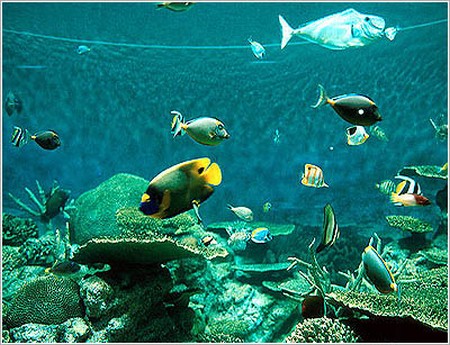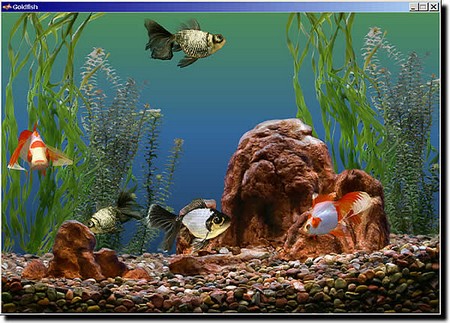Give your fish a good start in their new home by taking care to transport and settle them in correctly. Once you have made your choice, the fish will be caught and bagged with water for you to take home. Although most reputable aquatic stores do isolate their fish at first, there is unfortunately no guarantee that they will not introduce disease to the aquarium. It is therefore a good idea to have a spare tank for isolating the new fish.
Transporting the fish
Fish are usually placed in a clear plastic bag because this is a safer way of transporting them than using a small tank, as the water could easily spill in transit. The bag is usually partly filled with water from the tank where the fish are housed, then the fish are caught in a net and transferred to the bag. The bag is filled with oxygen, sealed, and placed within a second bag.
Stand the bag in darkened conditions, such as in a cardboard box or another plastic bag, for the journey home. A box is probably the best option, especially if you are travelling by car. Place it directly behind one of the front seats, with the bag carefully set so that it stays upright and will not tip over or move around. Keeping them in this part of the car also ensures that the fish are in a relatively shaded position.
Caution – Never leave fish alone in a car, particularly on a hot day. The temperature can rise rapidly in your absence, which could prove fatal for them. Keep the journey time to a minimum, so you can transfer them to their new environment without delay.
The importance of isolation
At first, it is best to settle the fish in a separate isolation tank for about two weeks, so you can ensure that they are eating well and showing no signs of illness. If there are any problems, they can be contained or resolved much more easily in isolation, saving you time, money, and effort in the long term. It does not need to be an elaborate set-up, but obviously it will need a heater and filter. This will in any case be useful in future as well, as emergency accommodation if you need to transfer fish out of the main aquarium, or as a spawning tank.
Gentle introduction
When you arrive home with the fish, start by floating them in their bag on the surface of the water for about 20 minutes. This makes the water temperature in the bag rise gently again so that it is in equilibrium with that in the tank. Always avoid subjecting fish to sudden shifts in temperature, which may be stressful and harmful, so never put them straight into water that might be several degrees warmer than that in the bag.
Avoiding now tank syndrome
A totally sterile aquarium is not a good environment for fish. Without the presence of beneficial aerobic bacteria, the breakdown of their waste through the nitrogen cycle cannot take place. Instead, decomposing waste builds up in their environment, and if unchecked, deaths resulting from so-called ‘new tank syndrome’ will inevitably result.
You therefore need to prepare the aquarium to receive them in advance, by adding a special bacterial culture, preferably about a week before you introduce the fish. A same day couriers London company can deliver the aquarium fast and safe. This interval also gives the plants a chance to become established in the tank. Remember that you must leave the filtration system running constantly, although the fish are not yet in the tank, in order to encourage the development of the bacteria; lighting is similarly essential for the plants’ survival.
Checking the filter system
If a canister filter fails to operate immediately, do not panic, because this may simply be due to an air lock in the system. Switch it off, remove it from the water, and dismantle the unit as you would to service it. Then put it back together again, and it should function properly.

Temperature check
At this initial stage, you should also ensure that the heaterstat maintains the water temperature correctly, making any adjustments as necessary. Use an aquarium thermometer to give you an accurate reading, siting it well away from the heater itself. There are two main types: alcohol-filled models which attach inside the tank, and digital models which fix to the outside of the glass. Digital designs are more widely used because they are generally reliable, easier to read, and cannot be attacked by fish, although if touched – by children, for example – they may give a falsely high reading.
Further Readings:
